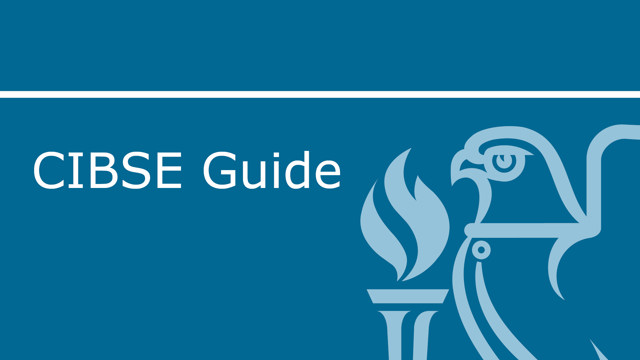
Guide B provides guidance on the practical design of heating, ventilation and air conditioning systems and is divided into six sections which are published separately:
B0: Applications and activities
B3: Air conditioning and refrigeration
B4: Noise and vibration control for building services systems
The full set is available at a discounted price here: Guide B (full set)
Topics covered in Guide B4: Noise and vibration control for building services systems include:
- Mechanisms of noise generation, noise sources and transmission paths
- Summary of noise and vibration problems from HVAC
- Typical sources of HVAC noise and their characteristics
- Transmission paths
- Control of the transmission paths
- Noise sources in building services
- Fans
- High velocity/high pressure terminal units
- Grilles and diffusers
- Fan coil units
- Induction units
- Air conditioning units
- Fan-assisted terminal units
- Rooftop units/air handling units
- Acoustic louvres
- Chillers and compressors
- Pumps
- Boilers
- Heat rejection and cooling towers
- Chilled ceilings
- Lifts
- Escalators
- Electric motors
- Noise from water flow systems
- Noise control in plant rooms
- Risk of noise induced hearing loss
- Breakout noise from plant rooms
- Break-in noise in plant rooms
- Estimation of noise levels in plant rooms
- Airflow noise – regeneration of noise in ducts
- Flow rate guidance
- Prediction techniques
- Damper noise
- Turbulence-induced noise in and from ductwork
- Control of noise transmission in ducts
- Duct components
- Unlined straight ducts
- Lined straight ducts
- Duct bends
- Duct take-offs
- End reflection loss
- Passive attenuators and plenums
- Active attenuators
- Use of fibrous sound absorbing materials in ducts
- Duct breakout noise
- Duct break-in noise
- Attenuator noise break-in
- Room sound levels
- Behaviour of sound in rooms
- Determination of sound level at a receiver point
- Source directivity
- Sound transmission between rooms
- Privacy and cross talk
- Transmission of noise to and from the outside
- Transmission of noise to the outside and to other rooms
- Transmission of external noise to the inside
- Naturally ventilated buildings
- Criteria for noise from building services systems
- Objective
- Choosing noise criteria parameters
- Design criteria
- Using dBA, dBC, NR and NC levels
- Noise prediction of sound pressure levels from building services
- Room effect
- System noise
- Breakout/break-in noise
- Noise propagation to outdoors
- Vibration problems and control
- Fundamentals of vibration and vibration control
- Rating equipment for vibration emission
- Vibration isolation criteria
- Common types of vibration isolator
- Practical examples of vibration isolation
- Noise in HVAC systems
- Vibration in HVAC systems
- Appendices
- Explanation of some basic acoustic concepts
- Regeneration of noise by duct components and terminations
- Interpreting manufacturers’ noise data
- Noise instrumentation
- Vibration instrumentation
- Uncertainty in measurement and prediction of sound levels and sound power levels
- Application of noise prediction software and integrated building design processes
Acknowledgements:
Guide B4 Steering Committee: Bob Peters (Chair), Alan Fry Salex, Richard Galbraith, Peter Henson, Alex Krasnic, John Lloyd, John Shelton, Peter Tucker
Referees: Richard Cowell, Mark Saunders, Keith Shenstone
Corrigendum (September 2016): makes corrections to Figure 4.63.